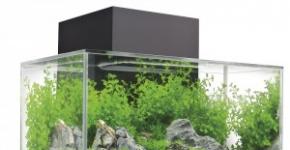Aquaria for beginners: important tips. My first aquarium: which one to choose, how and where to install?
A beautiful aquarium in the house brings joy to our lives during the contemplation of fish and perfectly affects the psychological component. Each novice aquarist unwittingly wonders where to start, to get everything right for the aquarium, run it right the first time and prevent the fish from dying.
 Before acquiring a tank for fish, it is necessary to carefully consider its design and shape so that it fits into the interior of the room as naturally as possible, does not interfere with its basic purpose and is located in a place convenient for viewing.
Before acquiring a tank for fish, it is necessary to carefully consider its design and shape so that it fits into the interior of the room as naturally as possible, does not interfere with its basic purpose and is located in a place convenient for viewing.
By design, aquariums are on a stand, on legs, suspended, angled, frame and frameless. In form, they are represented by more than a wide choice, the main of which are:
- spherical (round);
- cubic (square);
- parallelepipedal (rectangular);
- parallelepipedal with convex viewing glass (panoramic);
- prismoidal (with a regular polygon of the bottom, as a rule, high, for a floor installation);
- pyromidoidal (triangular, for closed-type aquariums).
The main parameters for choosing a tank for keeping fish in a novice aquarist are the following factors:
- correct installation, which should allow various manipulations during operation (removal or installation of the cover and backlight, feeding fish, planting plants, cleaning the filter, bottom siphon, etc.);
- the exclusion of direct sunlight on its surface;
- the number and size of the aquarium population (the required volume of the aquarium depends on this. If there is no certainty for specific fish, then take at least 1 liter of water per 1 cm of adult fish, i.e. if you want to contain 10 fish 8 cm long, you need an aquarium more than 80 liters, it will avoid overcrowding and allow it to develop well and feel comfortable for its inhabitants).
Aquarium accessories
 Together with the aquarium offer covers with integrated lighting and cabinets for them. If there is no specific place to install the aquarium, then you can use this offer. A lid for a backlit aquarium will prevent many species of fish from jumping out, reduce evaporation of water into the atmosphere of the room, and also provide artificial lighting for the plant and allow you to control the length of the day in a pond. The cabinet is suitable for storing all sorts of accessories (a net, tubes, suckers, feeders, literature, etc.), feed and other things related to the aquarium.
Together with the aquarium offer covers with integrated lighting and cabinets for them. If there is no specific place to install the aquarium, then you can use this offer. A lid for a backlit aquarium will prevent many species of fish from jumping out, reduce evaporation of water into the atmosphere of the room, and also provide artificial lighting for the plant and allow you to control the length of the day in a pond. The cabinet is suitable for storing all sorts of accessories (a net, tubes, suckers, feeders, literature, etc.), feed and other things related to the aquarium.
Aquarium equipment
There is a standard set of equipment for aquariums:
- illumination (the choice of lamp power and the duration of illumination during the day depends on the inhabitants and plants);
- water heater (it is better to choose with automatic temperature control);
- aerator and water filter can be both combined and separate (power depends on the volume of the aquarium).
The selection of soil and scenery depends on the inhabitants, but small fractional rounded gravel without sharp edges is considered universal. The thickness of the soil at the bottom should be from 5 to 7 cm, this will allow plants to root well and grow. You can use locks, sunken ships, etc. to decorate and create a unique interior.
The choice of inhabitants and vegetation
 For beginners aquarists fit almost all viviparous fish:, swordtail, petilia and gupii. They are beautiful, elegant, not difficult to maintain and hardy. The content and reproduction of these species will allow you to learn the basics of aquarism while investing minimal financial and time costs.
For beginners aquarists fit almost all viviparous fish:, swordtail, petilia and gupii. They are beautiful, elegant, not difficult to maintain and hardy. The content and reproduction of these species will allow you to learn the basics of aquarism while investing minimal financial and time costs.
You can run a few small catfish to the viviparous fish. They differ in coloring, body shape and behavior. will add refinement to the aquarium and will eat the remnants of food and clean the plants. Antsitrus catfish suckers are perfect.
From low-priced low-priced plants, you can use elodea, valisneria, cryptocarin, and from superficial plants, ichie or duckweed. You can also add lumps of moss to a kladofor or javanese moss.
Running aquarium
Before releasing beautiful fish in the aquarium, it takes about two weeks. One day can be done:
- laying soil, planting plants, installation of lighting decorations, heating, filter aerator;
- filling the aquarium with tap water;
- turning on the heater and filter aerator.
After that, you need to wait a week for chlorine to evaporate from the water during this time. It is allowed to add various normalizers to the water, which improve the water parameters. Before using them, you should consult with competent aquarists or sellers who know the parameters of tap water in your area.
After a week, you can run the first, most enduring inhabitants - snails ampoules, tritons, frogs or shrimp. Often the first are ampulyarii. They have a positive effect on the formation of an ecosystem in an aquarium. Water in a room pond is gaining stability in the order of a month and may become cloudy. Over time, it will clear and be transparent. And only depending on the state of water and the state of health of the ampoule, after about a week you can run inexpensive fish. More information about the first launch of the aquarium can be read.
From practical experience
![]() There are some general tips on keeping and breeding fish, but it all depends on the specific inhabitants of your aquarium.
There are some general tips on keeping and breeding fish, but it all depends on the specific inhabitants of your aquarium.
- It is better to buy a rectangular aquarium without panoramic glass, while its length should be greater than the height and width less than the height.
- The volume of the aquarium of about 100 liters will allow you to contain a closed ecosystem (the state of water in the temperature, chemical and biological ranges will be less subject to drastic changes, which will affect the health of the fish), and will also require lower maintenance costs.
- Maintaining a constant temperature will save the fish from many diseases.
- Overfeeding fish can not be, and better to feed once a day. Food should be varied - live, frozen, dry (if you feed constantly alive, the fish begin to get fat and it becomes difficult for them to multiply).
- Change the water in the aquarium weekly with the replacement of up to 30% of the total. Cleaning and siphon bottom in the first month after launch do not need. Depending on the number of fish, pollution of the bottom or chemical indicators of water, these activities should be carried out approximately once every two to four weeks.
- The water filter and aerator in the aquarium should work around the clock.
- Lighting needs to be controlled, otherwise excessive growth of algae or plants will begin. The duration of coverage per day is in the range from 8 to 12 hours.
How to choose an aquarium will tell experts of the program “Cheap and angry” (Channel One):
Which aquarium to choose?
Buying your first aquarium, do not even think about which aquarium is better to choose. What is enough finance, then bought it. This suggests that often the choice of an aquarium does not come down to what is better, but to the question of individual capabilities. Therefore, first of all, it is necessary to decide on a budget, it is also necessary to take into account that spending alone does not end with the purchase of an aquarium. At a minimum, you will need to buy more: filter and aeration, thermostat, soil, most fish. It would be nice to buy: decorations, plants (live or artificial), aquarium equipment (landing net, siphon, magnetic scraper, etc.), as well as to adjust the biosystem.
In addition, an important role is played by the place where the aquarium will stand! Much depends on the location of the aquarium: its volume, shape, purpose, and so on. For example, if you decide to put an aquarium in a corner of a room, then in our opinion it is better to purchase a corner aquarium. Such an aquarium will fit well into the interior, will not take up much space, will give a good panoramic view of the aquarium.
Just need to think in advance: what and who will be in the aquarium. The conditions of the maintenance of aquarium inhabitants are different. For example, some fish need a large aquarium, others will be enough for a small aquarium. One needs a long aquarium, while others need an aquarium cover because of the jumping ability, and so on.
Analyzing the Internet, as well as from personal experience, we can recommend a rectangular aquarium with a volume of 100-200l.
The volume of such an aquarium allows you to start many hydrobionts: fish, plants, snails, shrimps, etc. The size of such an aquarium meets the needs of many people, and the prices do not bite much.
What else should be considered when choosing the best aquarium.
All aquarists, in one voice, I recommend taking a large aquarium from 100 liters. It is right, because it is easier to take care of such an aquarium, it is easier and faster to adjust the biobalance, adaptation and life of the aquarium inhabitants in such an aquarium better.
However, do not think that small aquariums are worse, no. Just such aquariums need a little more attention. At a small aquarium (20-50l.), You can "practice" and understand whether you are interested in aquarium in principle or not, get a hand, well, and then decide whether to take a large aquarium or not.
On sale there are small round-shaped aquariums. As a rule, they live cockerel fish. Note that for a child, for a novice aquarist, such an aquarium takes place. But you need to think about filtering at least in the aquarium. To have a normal temperature. It is necessary to study the specifics of care for such an aquarium. After all, the issues of biobalance and the nitrogen cycle are more acute than ever in such aquariums. The best option for this kind of aquariums -.
On sale it is also possible to find high, narrow aquariums, made as aquarium paintings. Such aquariums are relatively inexpensive, but they are not pulling the title of the best. First, it is difficult to care for them, and secondly, aquarium fish will be uncomfortable in them, for them the main length and width of the aquarium, and not height. Height also plays a role, but in combination with length and width.
The most common form of aquarium is a rectangular, but you can also recommend a panoramic aquarium or an aquarium with a convex front glass. Panoramic aquarium consists of 6 faces (walls) - which gives more viewing angles. A tank with a convex front wall gives volume and looks more interesting than an aquarium with straight glass.
When buying an aquarium, pay attention to its cover. Covers can be plastic, wooden or glass. The main issue is the lighting mounted in the cover. If the aquarium will have a lot of aquarium plants, the issue of lighting is best solved immediately. Pay attention to the fluorescent lamps on them: the number, power and characteristics. It is advisable to consider the possibility of adding lighting under the cover.
When buying an aquarium, you should carefully check it for the presence of chips and microcracks. Note that even the smallest crack under the pressure of water will sooner or later turn into a huge hole. This rule is especially important if the aquarium is purchased through an online store. Movers do not really stand on ceremony with the goods. Carefully check everything when delivering the aquarium to your home.
Talk about choosing the best aquarium can be a lot, but as they say it is better to see once than to hear once. Therefore, we proceed below to a visual study of the issue.
Forms of aquariums

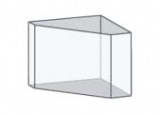
Corner Aquarium Panoramic Corner 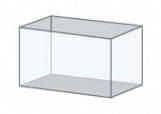
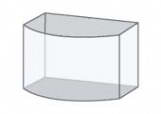
Rectangular With convex glass 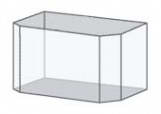
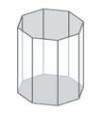
Panoramic Octahedron
more forms 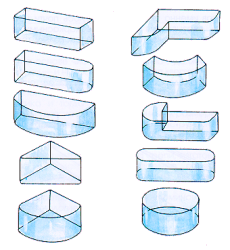
Now let's seeon the most popular forms of aquariums
General aquarium- it is intended for keeping fish of various types. As a rule, in such an aquarium fish are selected according to the principle of general compatibility. Most amateur aquariums are common aquariums.
Species Aquarium - an aquarium in which fish of only one species are contained. A characteristic example is an aquarium with discus. Discus are called kings of an aquarium and as a rule they are kept separately, because they are expensive, large, I have my own specifics and conditions of detention.
Spawning aquarium - it is intended for cultivation of fishes, spawning, incubation of caviar and cultivation of fry. As a rule, such aquariums have a small volume and in such aquariums create special conditions (temperature, lighting and certain water parameters - dH, pH, kH), which promote spawning of certain fish. Spawning aquarium can also be divided into incubator - it is intended for cultivation of caviar, fish larvae, nursery aquarium - it is intended for cultivation of the grown up juvenile fry.
In terms of shape and function, a spawning aquarium is no different from other aquariums, it is needed exclusively as a separate body of water. Thus, if you want to breed fish, in addition to the general or specific aquarium, you need to purchase and spawning.
Quarantine aquarium or medical - as well as spawning it is a separate reservoir, but intended for testing and adaptation of newly purchased fish, treatment of sick fish.
In such an aquarium, a quarantine for new fish is arranged in order not to infect the common aquarium. The need for quarantine is due to the fact that even if you bought a seemingly healthy fish, signs of the disease may appear in a week or two. During this period, the fish in the quarantine aquarium check and in addition carry out adaptation measures. Adaptation is needed because Some fish do not tolerate abrupt changes in the parameters of the aquarium water.
Quarantine aquarium is especially needed if you purchase fish in the Bird market, as a rule, in such markets a lot of sick fish. In pet stores, this risk is less, but still it is.
In addition, quarantine aquarium can be used as an aquarium for the treatment of diseased fish. Treatment can be carried out in the general aquarium, if it is an infectious disease, for example, ichtiftyriosis. But, if it is an individual sore, the fish is best treated separately.
Aquariums can also be divided into:
Biotope - it imitates a single habitat, an underwater landscape (lake, stream).

Dutch - aquarium designed for aquarium plants.
When we choose an aquarium for the home, it is important to know the answers to questions related to the maintenance and maintenance of the aquarium, additional equipment, and other things, especially if you are new to this business. There is a wide variety of aquariums, they all differ in functionality. Before you go to the pet store to buy a house for fish, it is advisable to listen to the advice of experts. Then he will not cease to please you for many years.
Cozy Aquarium
The first and most important is the size of the aquarium. Large-scale aquariums have an advantage - they stay clean longer, so it will be easier to maintain the ecosystem necessary for the inhabitants. The size of the aquarium significantly affects the mood and condition of the fish that live in it.
So, the fish living in an aquarium of a small volume stop growing and start to hurt, and if there are a lot of them, they die because of overpopulation.
To avoid such unpleasant consequences, choose the size of the aquarium, given the number of future tenants.
The optimum volume - 60 - 100 liters. If you plan to start fish 6 - 7 cm long, choose a larger aquarium - 200 - 250 liters. These relationships are approximate, so the rule here is relevant: the larger the aquarium, the better. Snails are an important component of a full-fledged aquarium ecosystem, they grow better if the depth reaches at least 60 cm.
For good health, fish need a stable water temperature, and small aquariums are not able to maintain this figure constant. Even a few degrees fluctuation will negatively affect the fine balance of the biological environment and subsequently the health of the fish.
Aquarium arrangement
Now it's time to decide which ones will inhabit the aquarium. Based on this, you should create a landscape similar to the natural habitat of this species. Some fish species feel comfortable among a large amount of algae, others need more stones.
Many replace living plants with artificial plants. Although this is not prohibited, remember: artificial plants do not go to the slightest comparison with the real, alive, able to maintain a special environment in the aquarium.
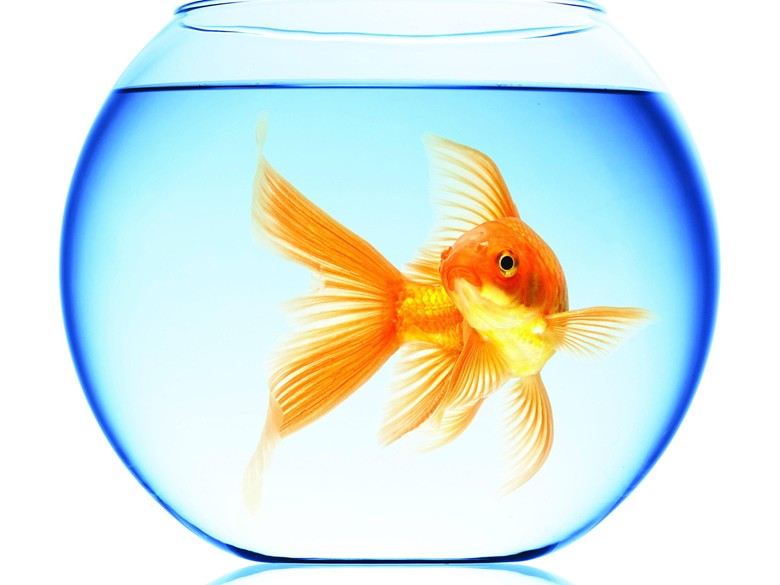 Wrong aquarium
Wrong aquarium The shape of the aquarium has a direct impact on the state of its inhabitants. A round aquarium, although it enjoys a certain popularity, greatly distorts the image and the fish in such a dwelling, to put it mildly, are not comfortable. Narrow, but tall aquariums are no more than a stylish decoration of a room - the fish in it are bad, as they have to swim along, not from top to bottom.
And remember - we are responsible for those who have tamed!
Aquarium maintenance, cleaning
If you find an error in the text, then select this section with the mouse and click Shift + Enter or . Thank!
Hello everyone, dear readers of Aquablog. Glad to contemplate you again on the pages of this resource and as a thank you from me, I have prepared for you another article on the topic: How to choose an aquarium? And indeed, many novice aquarists ask this question, and they ask themselves very much in the subject, unless of course they have already bought it, and then ask if I took it. In this article, or rather in the first part of this article, I will try to reveal to you, dear readers, the maximum subtleties in this difficult task - choosing an aquarium. So. let's start :)
First, let's first determine what kind of aquariums are. At the moment there are two main types of aquariums: decorative and special. These are such large groups that they had to be divided into subgroups, which we will now also analyze. A decorative aquarium can be a collection, species, paludarium, Dutch or terrarium.
Special aquariums are subdivided into the following subgroups: incubator, spawning pool, quarantine aquarium, nursery and experimental. Most beginner aquarists begin their journey by choosing the shape of the future aquarium, its size and finish.
So, the shape of the aquarium, you can choose, in principle, any, ranging from round columns to conventional rectangular aquariums. The main thing when choosing an aquarium, harmoniously fit it into the design of the room where it will be installed. There is another option: you want to put in a special niche in the closet and you need an unusual shape aquarium. You will not be able to make an aquarium with rounded glass yourself, so it’s better to order from a master or buy it in a normal store.
Often, aquariums of unusual shapes are used as partitions between rooms, in furniture niches. But with all this, aquariums with unusual shapes, embedded in niches are somewhat inconvenient to maintain. If you want to buy products of our specialists, buy a company, just get ready to pay a decent amount for it! Only you can just sniff and fake, as is often the case in other areas of trade, but at least I have not heard of that. As they say, forewarned - armed.
Most of the current aquariums are glued, so when you buy a ready-made jar at a pet store, inspect it carefully for cracks, chips, bumps, scratches or broken corners. Pay special attention to the seams, the silicone should be evenly distributed throughout the seam and it should be without voids. All of these points above play a key role, as an aquarium with a broken manufacturing technology can play a cruel joke with you. Let's take a look at the parts of the aquarium in more detail!
Glass
As I have already said, the shapes of the glasses can be different and they are usually made of acrylic glass (or plexiglass) and silicate glass (the so-called display glass). By their qualities, they differ significantly from each other. If your area allows and the interior of the room requires a large aquarium, it is better to stay on an aquarium made of acrylic glass. Aquariums of medium and small volumes can be made of display glass.
Acrylic glass is substantially less silicate in density. Take two aquariums made of acrylic glass and silicate and you will feel the difference in the weight of the can. Only now it’s not the frame itself that puts the main pressure on the cabinet on the aquarium, but the water itself and the interior decor. If you buy a large-volume aquarium, you must select an appropriate tank for it, so that it does not sink under the weight of all this mass and does not give distortions. In no case is a moment allowed for the parts of the aquarium to protrude to the limits of the pedestal; let the best base of the pedestal be two or three centimeters larger than the bottom of the can.

Aquariums made of plexiglass will be better to keep warm, which is very useful for our post-Soviet countries, as it can turn off the light for several days in the winter in the cold, and the aquarium is not heated all this time.
Silicate glass is hard to scratch and it is harder, although quite fragile. Scratches on the glasses significantly reduce their strength, because the surface tension of the glass itself is broken. If, however, the scratch is on the glass, you can hardly get rid of it without a trace.
Standard rectangular aquariums are made mainly of silicate glass. Just the technology of making curved glass is quite complicated. For example, for me, aquariums with curved glass do not like for one simple reason - they distort the inner world of the aquarium.
Another advantage of acrylic over silicate glass is that you can drill in acrylic, which is very useful when you want to attach a terrace or a shelf to the wall of the aquarium inside. Acrylic itself is a soft material and more plastic and lightweight. Smashing it is much harder, but easier to scratch. To avoid scratching the acrylic glass, wipe it regularly with a soft flannel or other soft cloth. Just before wiping the glass, carefully inspect the wiping material, abrasive particles can get on it and you can aggravate the situation.
Acrylic glass is most widely used in the manufacture of panoramic aquariums of various shapes. And one more plus of acrylic - it is safety, plus the bottom of acrylic glass will be more reliable if the base is uneven.
Glass thickness and quality
The glass should not have scratches, cracks, chips and shells. When buying an aquarium, carefully look through the glass: even the smallest scratch can catch the eye after you pour water into the aquarium and cut in the light.
What can you say about the thickness of the aquarium glass? The larger the volume of the aquarium, the thicker should be the glass from which it is made. I have a post on the blog about, so there is a picture that shows the dimensions of the aquarium and, accordingly, the required glass thickness. Remember one thing - the higher the tank, the thicker you need glass.

If you take two aquariums of the same volume, only one rectangular and the second corner, an aquarium with curved glass will be more expensive. This high cost is justified by the number of bent walls, the number of operations for the manufacture of stiffeners, a curved bottom and so on. Therefore, I advise you to best buy a standard type of aquarium - rectangular without any show off. And of course there is your business, perhaps your interior design requires only a fenders aquarium.
Aquarium seams
Aquarium seams can say a lot, for example, the quality of the product as a whole. At the seams should not be any growths, or mounds, and other defects. If on the walls of the aquarium you can see silicone rubbish, then you can congratulate you - you bought a product of poor quality. The color of the sealant does not play any role. You can take both black silicone and white. According to numerous experiments, it became clear that with normal bonding technology, the glass in the aquarium would burst faster than the seam would break.
Glass butt end
Pay attention to the ends of the glasses on the aquarium. If they are polished qualitatively, then this is a good indicator. An aquarium made by handicraft methods will definitely be cheaper. Glasses with polished ends will be safer during gluing, plus microcracks are removed by grinding. It is because of these microcracks that aquariums of large volumes are destroyed.
Stiffening rib
Glass strips are used as stiffeners to strengthen the walls of the aquarium. The thickness of the ribs will be the same as that of the main glass and the width they can be up to 5 centimeters. If the aquarium is longer than half a meter, then the presence of stiffeners is a mandatory aspect.
Glue stiffeners perpendicular to the glasses of the aquarium (front and rear wall in 2-3 centimeters from the top of the aquarium). In addition to strengthening the aquarium, stiffeners are used to put a cover glass on them. In addition to the ribs, screeds are also used, but only if the aquarium is longer than one and a half meters. The width of the ties will be the same as the stiffeners.
This concludes the first part, subscribe to the blog posting so as not to miss the output of the second part, in which I will talk about the tank under the aquarium and other necessary attributes for the successful maintenance of the aquarium. I was glad to write this post for you, I hope you put into practice the advice that I gave you and everything will be fine with you.


